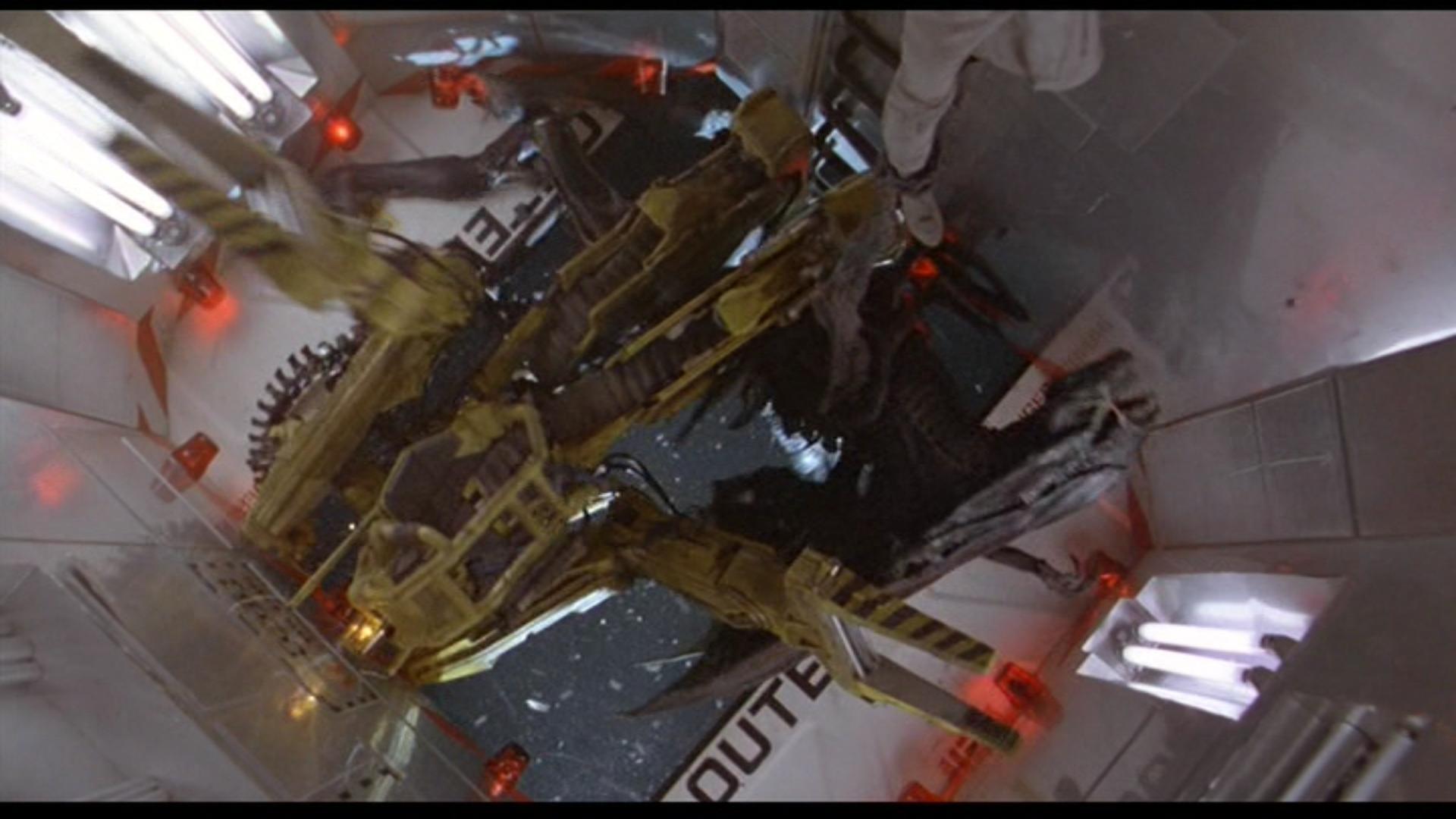I did a quick extrapolation from Organic Marble's data (1.5" diameter hole = lose 1500 lbs of air per hour from 14.7 psi; flowrate proportional to the square root of the pressure differential) and my estimate of the hangar and hatch size in the scene (40x40x10m hangar; 3m square hatch). There's a lot of uncertainty here and the large opening might not produce the same choked flow that a small hole would, but my estimate says half the air is gone in 7 seconds. After 14 seconds about 15% of the air is left, and the effective altitude is ~12km, which this article suggests leaves no more than 12 seconds of useful consciousness -- Ripley's going to black out before the Alien Queen lets go.
In the scene from the film, the airlock is open for about 70 seconds. If the volume of the hangar was 10 times my estimate, e.g. something like 20m x 80m x 100m, half the air would still be left after 70 seconds, and the scene would be more plausible. I'm not quite bored enough to watch the other hangar scenes to make a better estimate of the hangar volume; it's also possible that some air source beyond the hangar (i.e. the rest of the Sulaco's interior, or tanked air) might be feeding into the hangar during this scene.
Would the instant decompression force not pull her clean out (without being physically fixed down, locking arms does not to me seem sufficient but I may be wrong)
If Ripley were blocking the airlock completely, the pressure differential across her body would amount to several tons and she'd be blown out instantly. However, hanging on the ladder, there's some air flowing into the space downstream of her, so the pressure differential isn't as extreme. As discussed in comments below, this force is still at least a few tons; as mighty as Ripley is, she wouldn’t be able to hold onto the ladder, let alone climb out.
